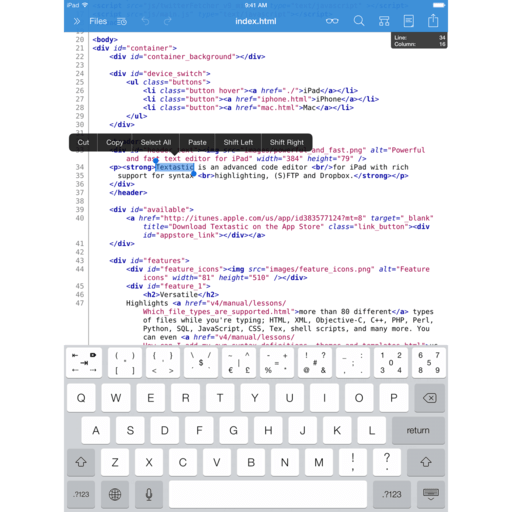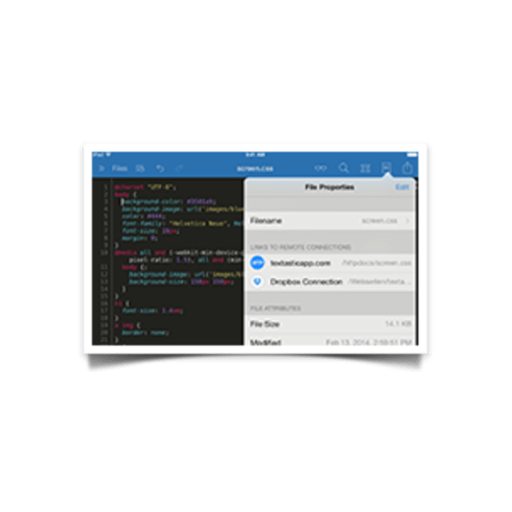

If you look at the screen you will see that there is a black line between the two halves.touch the line. I'm a Ruby on Rails programmer (amongst many other languages) and Ruby is an interpreted language. This question tells me you are in split screen mode. You do still need to run tests and things like that but no big show stoppers really.
#TEXTASTIC FULL SCREEN CODE#
I actually find coding with only a full screen text editor to be very productive as it makes you focus on the code without relying on all the various widgets that a typical IDE often provides. If your text editor is any good then you can do most things with the keyboard (eg.
#TEXTASTIC FULL SCREEN PLUS#
opening files is Cmd-T plus a few letters of the file rather than using a tree UI) Even when coding on my MBP 15" I run my code editor in full screen mode with my browser in the adjacent virtual desktop. Then I just swipe between them using the trackpad. On my iMac 27" Retina I have enough space to have the text editor and browser side by side using split screen mode.
#TEXTASTIC FULL SCREEN PRO#
I've only spent a little bit of time coding on my iPad Pro so far as I tried my best to actually stop working during the holidays but from what I've tried so far it is entirely possible to code on the iPad Pro. My setup so far includes the app Working Copy to access my git repos and Textastic to do the actual editing. Even better, you can set up Working Copy to be a document provider for Textastic so you don't need to do any sort of transfer back and forward.

There are huge bars on top and bottom that I am unable to hide. Given the iPad's limited screen real estate with the landscape keyboard active (doubly do with the extra row of keys Textastic usefully adds), it would be extremely useful to have a view mode which maximized the text editor area as much as possible, in particular by hiding the top bar and leaving only the editor area and keyboard (and black status bar, which of course can't be disabled). You just create a branch in WC then switch to Textastic and use the "Open." dialogue to open whatever file you want to edit. I am using Textastic on iPhone X to read source code and landscape is very broken. Once you've finished editing you can switch back to WC and do your commit messages and push the branch. I just did a quick test using Coda and it can also access WC as a document provider although I've not used it properly for that purpose yet. Especially those geared at developers.So, although it's tough to beat a 27" Retina iMac for productivity as a developer or even a 15" MBP, it is absolutely possible to use an iPad Pro for development depending on what "development" means for you. How much would have to be rewritten in Swift for iOS?įinally, how much would you pay? I would have no problem at $20 or even $30 but I don't know if that's enough for Barebones to justify development.

Also, BBedit has a long history and I'm guessing a lot of objective-c. forget Applescript/shell scripts, worksheets and I'm sure a list of other features. The question is would you want the version of BBedit Barebones would have to create to work in iOS? i.e. Textastic is a great editor on iOS but having the same editor on both systems would be a nice benefit. That being said, I would love BBedit anyway. It cannot replace my MacBook pro with dual large monitors as having a full UNIX system with a lot of screen real estate simply blows away a 12" iPad, even if the iPad Pro is matching the horsepower of laptops a few years ago. I have used Textastic (along with the very cool Working Copy for git management) and worked on some web projects.

Without Xcode on an iPad, it's a non-starter for most developers.


 0 kommentar(er)
0 kommentar(er)
